My shopping cart
Your cart is currently empty.
Continue Shopping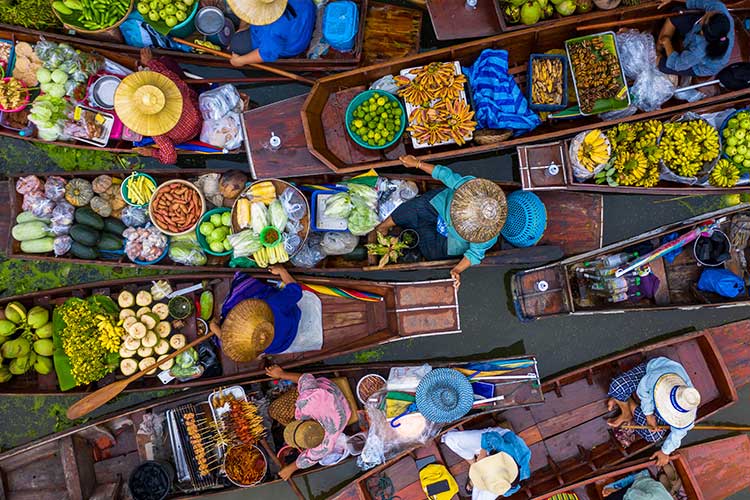
Central Thailand, or ‘Phak Klang’ in the regional dialect, covers an area of broad plains, mountainous territory and coastal expanse. The region is dominated by the Chao Phraya River and its tributaries which make the land fertile and ideal for growing various crops, especially rice. Mostly covered in paddy fields, fruits orchards and farms, Phak Klang is often referred to as the ‘rice bowl of Thailand’.
The Central region is a home to Thailand’s former capital city, Phra Nakhon Si Ayutthaya, once an important international port and trading center with China, India, Portugal, France, The Netherlands and more.
Over four hundred years, Thai food was influenced by Eastern and Western cultures and cuisines, taken from foreign traders and missionaries, mixed with local ingredients and techniques. The Central region still plays home to the country’s capital city, even though it has been moved to Bangkok, which is one of the top culinary destinations in the world and offers a wide range of alluring food.
Some of iconic Thai dishes like Pad Thai, Tom Yam Goong, Green Curry, Massaman Curry originated in the Central region. The characteristics and flavors of the food from this region, in general, have a mellow taste of sour, salty, spicy and sweet. The cuisine commonly uses coconut milk to flavor the dish, and is typically served and eaten with steamed Jasmine rice.
Central cuisine uses a variety of cooking techniques from simple and easy to complicated methods like Royal Thai cuisine which is traditionally created inside the palace kitchens.
Royal cuisine is delicately prepared and contains a perfect balance of all flavors. However, some recipes and cooking processes are complex and only the best and freshest-available ingredients are used, this made the Royal cuisine too expensive for the commoners in the past. Anyhow, time has changed and made some ingredients available and affordable to the public. Modern appliances have also helped to make cooking those sophisticated recipes easier and faster, making the Royal Thai cuisine more widespread with some dishes now being world famous.
Here are some recommended dishes for traditional Central cuisine:
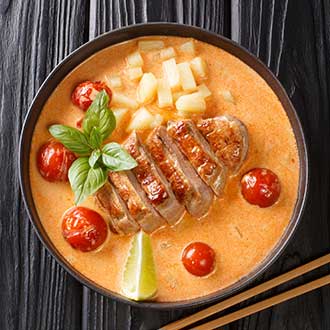
Gaeng Phed means ‘red curry’ in Thai and Ped Yang refers to ‘roasted duck’ which is a main ingredient for this dish.
The dish is a creation taken from Thai-Chinese culinary cultures, using Chinese roasted duck and Thai chili paste. What makes this curry distinct from other curry dishes is that Thai people use a few fruits, like cherry tomatoes, pineapples, salak fruits or grapes, to flavor the curry and make the duck meat tender.
The result is an aromatic, creamy curry with a mild sweet and sour taste. Gaeng Phed Ped Yang is not commonly found in food shops in Thailand but is mostly served in upscale Thai restaurants. But if you have a chance, it is worth a try.

Panang is a type of red Thai curry which is richer and thicker than a classic Thai red curry (almost like a Satay dipping sauce) and a bit milder than other curry dishes.
Panang has a mixed taste of nutty, salty and sweet, with a zesty makrut lime flavor. The curry is generally made with Panang Curry Paste, coconut milk and a main protein of your choice from beef, pork, chicken, or prawn, although vegetarian options are common too.
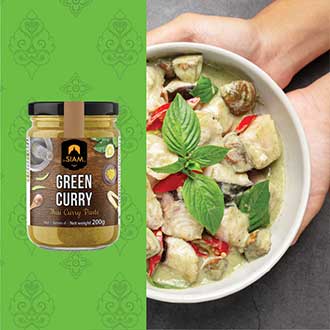
The famous Green Curry originated in the Central Thailand and is called “Gaeng Khiao Wan’ in Thai. Despite its soft, sweet color, Green Curry tends to be more pungent and is the spiciest curry of all.
The Green Curry Paste is made from fresh green chillies which gives the color and name to the curry. Mixed with shallots, garlic, galangal, lemongrass, kaffir lime leaves, coriander roots, cumin seeds, white peppercorns, shrimp paste and salt. When cooking the Green Curry, besides the chilli paste, the other main ingredients include coconut milk, palm sugar, fish sauce, Thai eggplant (aubergine), pea aubergine, basil leaves and meat – traditionally fish, fish balls, chicken, pork, beef or tofu.
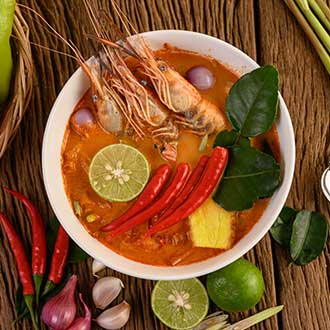
Tom Yam is another world renowned cuisine from the Central region. This Spicy Shrimp Soup is packed with herbs and spices that are proved to be very healthy and can boost your immune system.
Some common ingredients are lemongrass, chilli, galangal, kaffier lime leaves, shallots, straw mushrooms, and seasoned with fresh lime juice and fish sauce. Any meat can be used for Tom Yam, from pork, chicken, beef, fish, but the shrimp or prawn (‘Goong’ in Thai) is the most popular option.
You can add coconut cream and Nam Prik Pao (sweet chili paste) to the soup if you want a creamy and milder version of Tom Yam Soup.
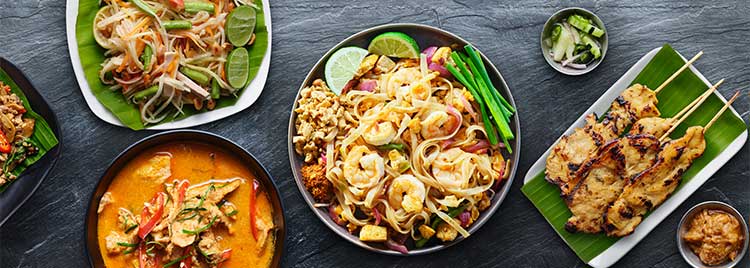
Pad Thai is another creation from the Central region that became one of the most beloved Thai street foods. For those who have never tried Pad Thai, it is a stir-fried noodle dish, made from rice noodles, mixed with eggs, tofu, tamarind paste, fish sauce, dried shrimps, garlic, palm sugar and red chilli pepper.
Meat like chicken or pork can be added, but the most popular choice is shrimp. Typically served with bamboo shoots, spring onions, raw banana flowers, lime wedges and topped with ground peanuts and dried chilli flakes for a kick.
Many Thai restaurants overseas also have this dish on their menu but eating Pad Thai in Thailand is still a must, for that authentic taste and atmosphere.
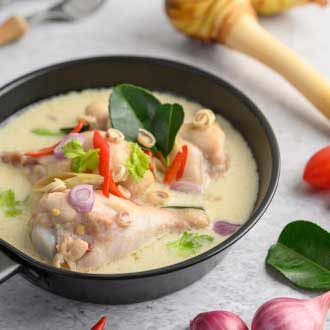
Tom Kha Kai, or Thai Coconut Chicken Soup, is a spicy and sour hot soup that uses coconut milk as a base, but is not as thick as curry. ‘Kha’ in Thai means ‘galangal’ which is the main ingredient of this soup.
Galangal looks a lot like ginger, but it has a milder citrusy flavor. Tom Kha is similar to Tom Yam in terms of it being a spicy and sour soup, but it also offers a different and unique taste and texture.
The coconut milk makes the soup creamier, mildly sweet, and less spicy than Tom Yam. Thai people usually add chicken to the soup, which would make the popular version ‘Tom Kha Kai’.